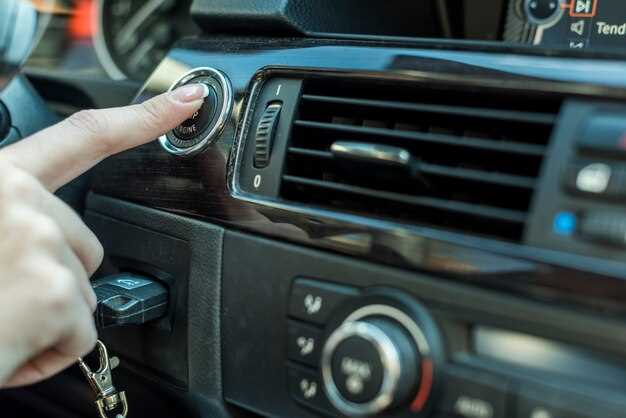
Maintaining a European car involves regular servicing to ensure optimal performance and longevity. One essential aspect of this maintenance is addressing the service lights that illuminate on your dashboard. These lights serve as reminders for scheduled maintenance, including oil changes, filter replacements, and other essential checks. Resetting these service lights is crucial after performing the necessary service, as it helps drivers keep track of when the next maintenance is due.
European car manufacturers often implement unique systems for their service indicators, which can make it challenging for owners and technicians alike. Understanding the specific reset procedures for your particular make and model is vital. This article will guide you through the steps necessary to reset service lights on various European automobile brands. From Audi to BMW and Volkswagen, we will delve into the processes that will ensure your vehicle’s dashboard accurately reflects its maintenance status.
Moreover, attempting to reset a service light without performing the required maintenance can lead to serious long-term consequences for your vehicle. Ignoring these reminders can result in engine problems and increased repair costs. Therefore, follow along as we outline effective methods to reset service lights, emphasizing the balance between timely maintenance and accurate vehicle diagnostics.
Understanding the Different Service Light Indicators by Brand

Service light indicators vary significantly among European car manufacturers, each utilizing distinct symbols and color coding to convey specific maintenance needs. Familiarizing yourself with these indicators is essential for proper vehicle care.
For example, Volkswagen typically employs a simple wrench icon for service reminders, signaling scheduled maintenance is due. On the other hand, Audi’s indicators may include a more sophisticated multi-functional display, allowing drivers to see not only the maintenance required but also tire pressures and other essential metrics.
BMW uses a different approach where the service indicator appears in the vehicle’s iDrive system. This system provides an overview of what services are next due and may also include information on past services, prioritizing the driver’s ability to track maintenance history.
Mercedes-Benz integrates a more sophisticated system known as the ASSYST feature, which monitors driving habits and adjusts the service intervals based on real data. The service indicator will appear as a message on the display, often accompanied by specific descriptions of required actions.
Renault, in contrast, utilizes a straightforward warning light that illuminates when maintenance is required, typically represented by an oil can icon. This is a direct and easily recognizable indicator that prompts immediate action.
Each brand also employs color coding effectively: green typically indicates that maintenance is okay or within scheduled intervals, yellow suggests caution or a preliminary warning, and red indicates immediate attention is required. Understanding these signals not only aids in maintaining the vehicle’s performance but also enhances safety on the road.
In summary, knowing the specific service light indicators for your vehicle’s brand is crucial for maintaining its health and ensuring timely repairs. Always refer to your owner’s manual for the most accurate information regarding your vehicle’s indicators.
Step-by-Step Guide to Resetting Service Lights on Common Models

Volkswagen: To reset the service light, turn the ignition to the “On” position without starting the engine. Press and hold the 0.0 button on the dashboard. While holding it, turn the ignition off and then back on. Release the button, and the service light should blink and turn off.
BMW: Insert the key into the ignition and turn it to the “On” position. Press the gas pedal three times within ten seconds. If done correctly, the service light will show information about the reset procedure. Follow the prompts on the display to complete the reset.
Mercedes-Benz: With the ignition off, press the gas pedal fully. While holding it down, turn the ignition to the “On” position without starting the engine. Keep the pedal pressed for about 10 seconds. The service light will turn off once the reset is complete.
Audi: Turn on the ignition by pressing the start button without pressing the brake pedal. Navigate through the menu using the controls on the steering wheel to find the “Service Interval” option. Select it and choose “Reset” to turn off the service light.
Ford: For models equipped with a digital display, turn the ignition to the “On” position. Press the gas pedal three times, then turn off the ignition. Upon restarting, the service light should reset. For other models, consult the user manual for specific instructions as methods may vary.
Peugeot: With the ignition off, press and hold the trip reset knob located on the dashboard. While holding it, turn the ignition to the “On” position. After a few seconds, the service light will reset, and a beep will confirm the process.
Renault: Turn the ignition key to the “On” position, then navigate to the trip meter using the button on the dashboard. Press and hold the button for several seconds until the service light resets. Confirm the reset with the vehicle’s display.
Opel: Insert the key and turn the ignition on. Ensure the odometer is displayed, then press the reset button for the odometer. Hold it down while turning the ignition off and then back on again. Release the button, and the service indicator should turn off.
Make sure to refer to the vehicle’s manual for any model-specific instructions or variations in the reset process, as methods can differ among specific models and years.
Troubleshooting Common Issues After Resetting Service Lights
After successfully resetting the service lights on your European car, you may encounter several issues that may arise. Understanding these common problems can help you address them effectively.
One frequent issue is that the service light might not turn off completely. This can happen if the reset procedure wasn’t followed correctly or if the vehicle’s onboard computer has stored additional error codes. Make sure to recheck the reset steps and use an OBD-II scanner to identify any lingering trouble codes that need to be addressed.
Another common issue is the return of the service warning light shortly after the reset. This typically indicates that routine maintenance, such as oil changes or fluid top-ups, has not been completed. Review the vehicle’s maintenance schedule and ensure that all necessary services have been performed. Ignoring these alerts can lead to bigger problems down the line.
In some cases, the dashboard may show multiple warning lights in conjunction with the service light. This situation usually signifies that there are additional issues that require immediate attention. Employ a diagnostic tool to read fault codes, which can provide insights into specific components that may need servicing.
Additionally, the vehicle may exhibit unusual behavior, such as decreased performance or strange noises, following the reset. These symptoms could be unrelated to the reset itself but may have coincidentally arisen. Conduct a thorough inspection of all systems to ensure everything is functioning properly. Pay special attention to any components that were serviced just prior to the reset, as they might be incorrectly reassembled or malfunctioning.
Lastly, some vehicles may require a second attempt at the reset process if the first was unsuccessful. Ensure that your vehicle is in the correct mode and that the battery voltage is sufficient during the reset. If problems persist, consulting the owner’s manual or seeking assistance from a professional mechanic can provide additional guidance.




